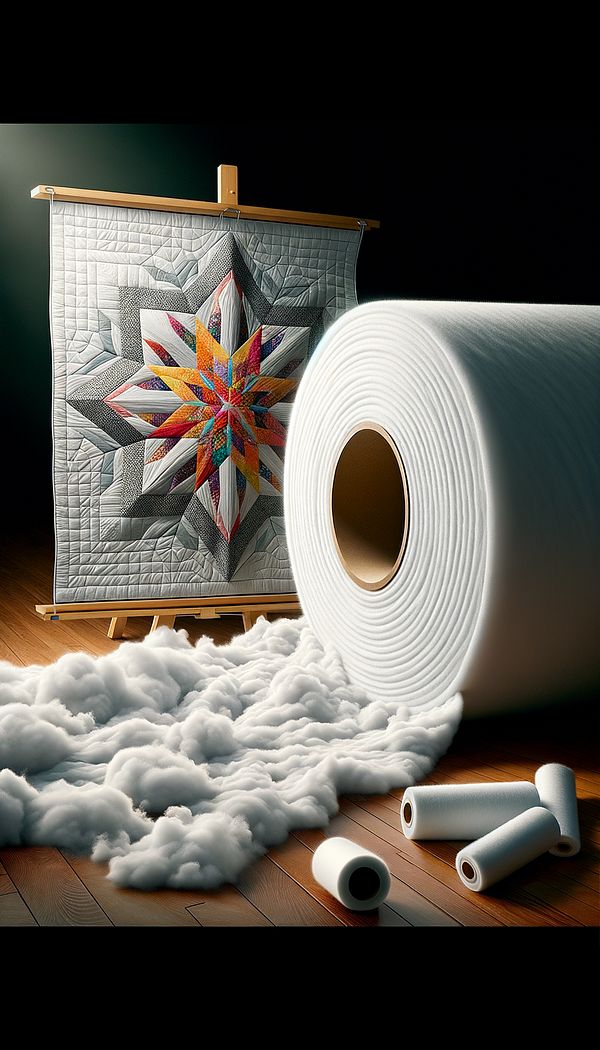What is Batting?
Batting is a layer of material used to provide padding and insulation.
Description
In the realm of interior design, batting refers to a soft layer of material often used as padding or insulation within various home furnishings and decor items, such as quilts, upholstered furniture, and window treatments. It is usually made from cotton, wool, polyester, or a blend of these fibers, each offering different levels of warmth, durability, and loft (the measure of thickness and fluffiness). Batting can be purchased in different weights and thicknesses to suit specific project needs, making it a versatile choice for designers and DIY enthusiasts alike.
The choice of batting material can significantly impact the comfort, appearance, and longevity of a piece. For example, cotton batting is preferred for its natural softness and breathability, making it ideal for quilts and bedding. Polyester batting, on the other hand, is more resilient and offers a higher loft, making it suitable for upholstery projects where a plush, cushioned effect is desired. Batting also plays a critical role in the insulation properties of window treatments, affecting both the aesthetic appeal and the energy efficiency of a space.
Usage
When revamping an old sofa, an interior designer might choose a high-loft polyester batting to restore its plump, inviting appearance. Alternatively, in crafting a handmade quilt, a designer might opt for natural cotton batting to enhance the comfort and breathability of the final product. Moreover, in designing window treatments, batting can be incorporated to provide additional insulation, helping to regulate indoor temperatures and reduce energy costs.
FAQs
-
What types of batting are most commonly used in interior design?
Cotton, wool, polyester, and blended fibers are the most commonly used types of batting in interior design, each offering distinct advantages in terms of comfort, durability, and application suitability.
-
How does the choice of batting affect the final product?
The choice of batting affects the final product's comfort, appearance, warmth, and durability. For instance, cotton batting provides softness and breathability, ideal for bedding, while polyester batting offers resilience and loft, suited for plush upholstery.
-
Can batting be used in outdoor furniture?
Yes, batting can be used in outdoor furniture, especially polyester batting, which is more resistant to moisture and mildew. However, it's essential to choose materials specifically designed for outdoor use to ensure longevity and performance.
Practical Application
When selecting batting for a project, consider the desired outcome in terms of comfort, appearance, and durability. For items that will be frequently washed, like quilts, choose a batting material that will maintain its shape and consistency over time. In upholstery projects, measure the furniture piece accurately to ensure the batting fits perfectly for a professional finish. Additionally, blending different types of batting can achieve specific characteristics, such as combining cotton for softness with polyester for extra loft.
-
Furniture Types599 articles
-
Window Treatments65 articles
-
Materials & Textiles360 articles
-
Textiles & Upholstery252 articles
-
AestheticAn aesthetic refers to the overall look or style that is pleasing to the senses.
-
Greek StyleGreek Style refers to the design and decoration principles originating from ancient Greece.
-
CassoneA large wooden chest, often richly decorated, used historically in Italy for storage and as a dowry trunk.
-
Poly Dacron WrapA Poly Dacron Wrap is a layer of polyester fiber paired with Dacron used in upholstery for cushioning.
-
Gallery RailA gallery rail is a type of railing or molding designed to display artwork or decorative objects.
